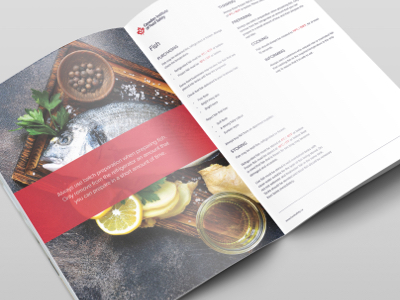
‘HACCP’ stands for Hazard Analysis Critical Control Points, and is a food safety and risk assessment plan that was initially developed in the 1960s by NASA to solve two critical problems facing NASA's crewed space missions: crumbs and disease-producing microorganisms (e.g. bacteria, viruses) or toxins.
Today, HACCP principles form the basis of Food Safety Programs that are accepted worldwide. HACCP principles can be applied to processes throughout every stage of the food supply chain and are used to manage food safety across many different types of food businesses.
What are the 7 principles of HACCP?
HACCP outlines seven principles that are key to ensuring the safety of food:
Conduct a Hazard Analysis
The initial process of identifying potential hazards that could occur in a food business.
Identify Critical Control Points
A Critical Control Point (CCP) is a point in the food preparation process where hazards can be reduced, eliminated or prevented.
Establish Critical Limits
A critical limit is the maximum or minimum value to which a food safety hazard (biological, chemical or physical) must be controlled. Often critical limit guidelines are set by government regulators.
Monitor Critical Control Points
Monitoring each CCP is essential to make sure that hazards don’t go beyond the critical limits set. Generally, monitoring can be broken down into four different categories: observation, sensory, chemical and physical.
Establish Corrective Actions
If a hazard exceeds its critical limit, a corrective action must be taken. Corrective actions are either immediate or preventative.
Establish Record Keeping
Comprehensive and up-to-date records must be kept of any hazard along with details of any corrective actions. These records are kept together in a living document called a Food Safety Plan which is part of a Food Safety Program.
Establish Verification Procedures
Verification procedures can help determine if your Food Safety Plan actually works to prevent the hazards identified. It is important to perform an audit of your Food Safety Plan at least once a year to ensure that everything is working.
Need to create a HACCP Food Safety Plan but don't know where to start? Learn more about the 7 principles of HACCP and how to create your Food Safety Plan with the CIFS HACCP Food Safety Plan Kit.
A Food Safety Plan is a legal requirement

Food businesses in Canada are required to have a Food Safety Plan as part of their Food Safety Program. When a Health Officer audits your food business, they will review your Food Safety Plan and its records to make sure your business is maintaining the highest standards of food safety.
The CIFS HACCP Food Safety Plan Kit provides a deeper understanding of what a Food Safety Plan requires and how to build one for your business. The CIFS Food Handler Certification course can help your employees learn more about HACCP and how to follow a Food Safety Program.
Protect your customers and your brand

HACCP principles are essential for any business involved in the food industry, including yours. A Food Safety Plan can protect your business from being the cause of a food-borne illness outbreak or severe allergic reaction from food allergens. These incidents can cause your customers to become ill or injured, and your brand and bottom line to suffer.
Protect your customers and your business from a food safety incident and ensure your Food Safety Plan is compliant with the CIFS HACCP Food Safety Plan Kit.




